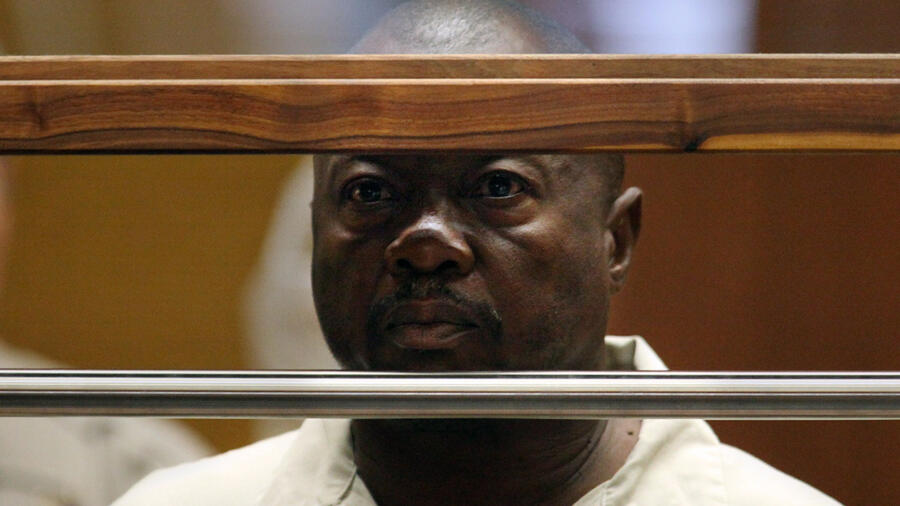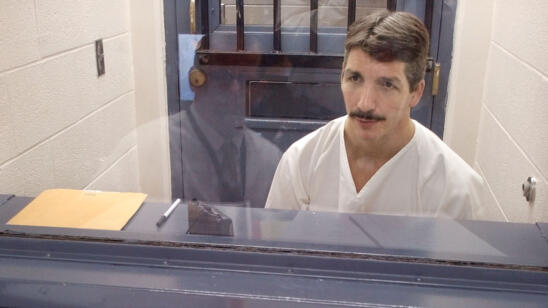They ranged in age from 15 to 35. They were mothers, sisters and daughters, each with hopes and plans—but their lives were cruelly cut short by Lonnie David Franklin.
Six years after Franklin’s conviction for the murders of nine women and a teenage girl, there’s no real closure for his “living victims,” Samara Herard, a sister to one of Franklin’s victims, tells A&E True Crime.
Princess Berthomieux, “was one of the sweetest, gentlest souls I’ve ever encountered,” Herard says.
Franklin, a Los Angeles serial killer nicknamed the “Grim Sleeper,” strangled the 15-year-old in 2002. “She didn’t get a chance to live her life,” Herard says.
It took investigators 25 years to finally identify and arrest Franklin, from the discovery of Debra Jackson’s body in a garbage-filled South Central alley in 1985, to 2010, when a recovered DNA sample was linked to the killer. All his victims were young, Black women, many at vulnerable stages in their lives. The delay outraged families and community activists who accused police of marginalizing the crimes because of race.
[Watch Cold Case Files in the A&E App.]
A retired garbage collector, Franklin prowled the streets near his South Central home, luring victims into his car, then killing them and dumping the bodies, Los Angeles County Deputy District Attorney Beth Silverman explains to A&E True Crime.
“I don’t think anything was by chance. I think he went looking for them,” Silverman says.
Franklin was dubbed “The Grim Sleeper” for an apparent gap in his terror spree between 1988 and 2002.
But some experts dispute there was a hiatus. “It’s not common. Most serial killers don’t stop on their own,” forensic psychologist and author Joni Johnston tells A&E True Crime.
DNA Cracks a Cold Case
Neighbors considered Franklin a friendly guy who helped fix cars, journalist Christine Pelisek wrote in her book, “The Grim Sleeper.” But his criminal history had already included raping a young woman in 1974 while stationed with the U.S. Army in Germany, and convictions for burglary, assault with a deadly weapon and auto theft.
In 2016, Franklin was found guilty of murdering seven women between 1985 and 1988 and three females between 2002 and 2007. He frequently used a .25-caliber handgun and often discarded the bodies in filthy Los Angeles alleys.
Some of the women were addicted to drugs, making them easy prey for Franklin, or they had been forced by circumstances to work as prostitutes on the dangerous streets, prosecutors said.
But Enietra Washington, a 30-year-old mother of two, was just walking to a friend’s house and thought Franklin was harmless when he pulled up and offered her a ride in 1988, Pelisek recounts. He shot her in the chest and then sexually assaulted Washington, who miraculously survived. She remains the only known survivor of the serial killer.
Despite Washington’s eye-witness descriptions and the efforts of a police task force, the trail of the killer went cold. A turning point came in 2007, when the body of Janecia Peters, 25, was discovered in a garbage bag inside a dumpster.
Saliva on the garbage bag provided DNA evidence that matched samples from some of the 1980s cold cases. It also linked to samples recovered from the murders of Princess Berthomieux and Valerie McCorvey, 25, who was strangled in 2003.
Authorities traced the DNA to Franklin’s son, who had to give a DNA swab after being arrested for carrying a weapon in 2009, and then to Franklin himself.
Victims’ families were heartbroken that it took so long to find the killer, who later received a death sentence.
“If they had done their due diligence, [Princess] never would have been a victim,” Herard says. “[Franklin] would have been caught decades ago.”
‘Hundreds of Pictures of Women’ Found in Franklin’s Home
While searching Franklin’s home and garage, investigators realized he was a hoarder who had kept memorabilia of his victims, Silverman recalls. “We found guns, we found identification cards, we found hundreds and hundreds of pictures of women. We tried, obviously, to identify as many as we could. In that effort, there were also a number of women who fit the profile, lived near him and went missing one day and were never seen again.”
Los Angeles Police Det. Daryn Dupree told the Los Angeles Times in 2016, “I don’t think he stopped killing.”
Franklin may have taken a break—but not as long as 14 years, Silverman thinks. “Some of the evidence we presented in the penalty phase regarding additional murders was between those two periods.”
Psychologist Johnston explains “the fact he kept so many pictures and trophies to me indicates just how strong of an urge this was for him.”
She notes there have been serial killers like Dennis Radar, also known as “BTK,” who waited years between murders, but in the case of Franklin he became progressively more violent. “When he allegedly resurfaces … he’s now strangling women as opposed to shooting them.”
Franklin died while on death row at San Quentin State Prison at age 67 on March 28, 2020. The Marin County coroner’s office tells A&E True Crime his death was from natural causes related to heart problems and high blood pressure.
‘Why Her?’
For Herard, Franklin’s death “does not bring me closure, it brings me to my next chapter. My parents raised me to believe that God is in control of everything and ultimately we will pay for the things we do.”
Princess was about age 3 when she came into Herard’s life. The little girl had suffered horrific abuse at the hands of her natural father and was covered with scars when she arrived at her new foster home in affluent Claremont, California.
“She would wake up screaming sometimes,” Herard says.
Fortunately, Herard’s mother, retired nurse Dolores Smart, “was one of those people who’d say, ‘send me your worst and I’ll repair them.'”
Dolores and husband David Smart sent Princess to private school and to therapy.
Gradually, she recovered. Herard recalls a loving child who couldn’t refuse Herard’s young son’s requests for “horsey rides. I’d say, ‘Princess—you can say ‘no,'” Herard recalls.
But in 1997, Dolores died unexpectedly, devastating the family and upending Princess’ world. When their father David later suffered from health problems, Herard took over her sister’s care. But as a college student with children of her own, the responsibilities became overwhelming.
Princess was sent to a foster home in Los Angeles, miles from Claremont.
“She was a private school girl who always had her own room with a walk-in closet and the best of everything. And they put her in the heart of the hood,” Herard says. “After a few months she ran away.”
After beating the odds when she escaped her abusive father, Princess’ short life ended in violence.
“It seems so unfair. Why her?” Herard asks. “I couldn’t have asked for a better sister—ever.”
In addition to Princess Berthomieux, Valerie McCorvey, Janecia Peters and Debra Jackson, Franklin’s other victims included Henrietta Wright, 35; Barbara Ware, 23; Bernita Sparks, 26; Mary Lowe, 26; Lachrica Jefferson, 22; and Alicia “Monique” Alexander, 18.
Related Features:
Was Serial Killer Wayne Williams Really the Atlanta Monster Who Murdered Dozens of Black Kids?
A Retired L.A. Area Cop on the Community’s Terror During the ‘Night Stalker’ Murders
Why Aren’t Police Solving More Murders With Genealogy Websites?


